15 Proven Ways to Sculpt Your Dream Body by An Expert Coach
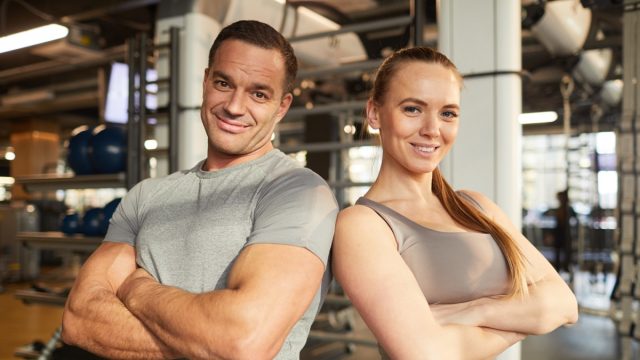
Want to sculpt your "dream body"? Let me tell you a little story about Dogs and Demons—and nutrition. Hear me out.
A long time ago, an emperor in ancient China asked his court artist what was more difficult: painting a demon or painting a dog? The artist responded that painting a demon is easy compared to painting a dog. Painting a dog is a much harder task.
The emperor replied in disbelief: "How can that be?" A demon is so complicated that it must require a higher degree of skill, while a dog is such a simple, lowly thing that anyone can paint one."
To the untrained eye, painting a fantastical demon seems to be much harder. That demon looks so….complicated. A demon is a product of the imagination. On the contrary, painting a dog, again to the untrained eye, looks like a very easy task. That dog looks so darned simple.
This story is a pretty good analogy for the kinds of far-out nutrition advice we see on social media all the time. The influencers, advice, "tips," and posts that get the most followers, attention, and likes also tend to be the most extreme, unscientific, and often downright bizarre.
Those are all paintings of "demons." In fact, anyone can paint a demon with virtually no skill at all. A demon is whatever you can cook up in your imagination.
Meanwhile, the most solid, effective, and proven ways of losing weight, building muscle, and sculpting a great physique are often passed over as just too simple-looking. "Not sexy enough." "Not exotic enough." "Looks too easy." And the real killer of all physique progress, "it's too much work."
That's a painting of a dog. And painting a dog that actually looks like a dog is entirely another matter compared to painting a demon.
What Does "SMART" Nutrition Mean to You?

A quick Google search of the term "SMART Nutrition" will turn up a number of commercial weight loss websites that sell everything from genetic testing to biochemistry analysis. Then data is used to sell expensive "solutions," ranging from expensive proprietary supplements to complicated dietary protocols.
Now, I'm not saying those "solutions" can't be effective, but are they the best ways to reshape your body, eat better, and get fit for life?
There's a very good reason why our grandparents back in the 40s, 50s, and 60s, across all income groups and races, were, by and large, slim. And it had nothing to do with genetic testing or proprietary supplements.
At first blush, their diet seems "too simple": garden vegetables, some meat, a little fish, some potatoes, sparing use of "luxuries" like butter, and maybe some dessert once or twice a week.
But that seemingly simple diet is the reason that they were, on average, over 24 lbs lighter than people tracked in the most recent data from 2002. (Source, Source)
That simple diet is the food version of the dog.
Then, we have our diet. "It's complicated, ya know." Fancy packaging, complex ingredient labels, and constant noise from social media leave us scratching our heads, trying to figure out what's best for our health.
That's the "demon" from the analogy.
My take on SMART nutrition is that it's a dog, but a well-trained dog.
Related: Denise Austin Shares 3 Simple Exercises to "Lift and Tighten Your Booty"
SMART Nutrition is Actually "Smart"
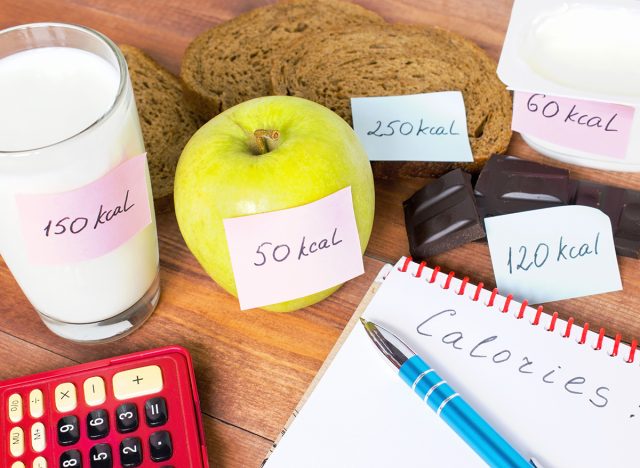
In my coaching practice, SMART Nutrition is simply this: whatever we do must be Specific, Measurable, Achievable, Relevant, and Time-bound. Nothing is random. Nothing is left to chance.
- Specific: When we set goals, they have to be precise, not vague. For example, "I want to lose 50 pounds" or "I want to achieve a body-fat percentage of 15%."
- Measurable: How are we going to measure progress? And is the goal itself measurable? It's not enough to say "I want to look good on the beach next summer." How do you measure "look good on the beach?" How do we intend to measure the attainment of a goal?
- Achievable: Can your goal be realistically achieved? For instance, if you've never set foot in a gym, being the next Mr. Universe is not an achievable goal. More achievable "mini-goals" can be stepping stones to a Big Audacious Goal. Success begets success.
- Relevant: Is your stated goal relevant to your circumstances? For instance, is wanting to have a body that's ready for a bodybuilding competition relevant to your needs? Maybe not. Or is looking great in a swimsuit or looking strong and muscular in your favorite t-shirt a more relevant goal?
- Time-Bound: a goal should have a fixed time frame. That sets some boundaries to adhere to. With a time limit for a particular goal, you're more likely to feel a fire lit under your butt to stick with the plan.
Using these seemingly simple principles, our "dog," you really can sculpt your "Dream Body."
SMART Nutrition Planning
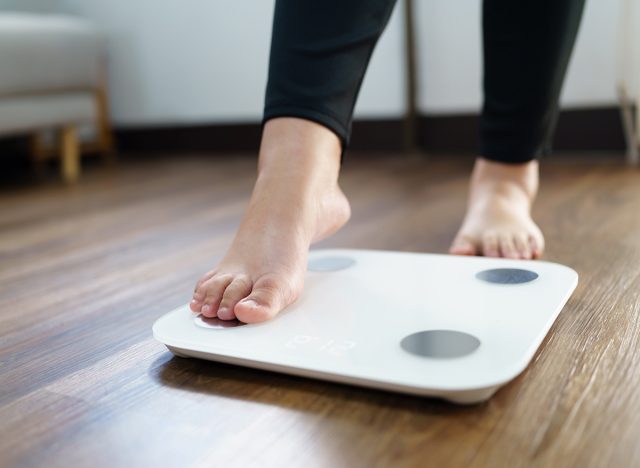
Let's start off with "be specific" and see where it takes us. Set the Big Audacious goal: "I want to lose 50 pounds within 6 months."
Perfect. Not only have we hit "specificity" but we've also hit "time-bound." And this goal is very measurable.
But Is it achievable? And is it relevant?
Let's unpack this. Let's say you're a 5'11" male and weigh 255 pounds. Is that goal achievable?
The guidelines I use with my clients, based on data from thousands of people who have lost weight, is that a "comfortable" rate of weight loss is <0.5% of total body weight per week. "Reasonable" is 0.5-1.0% per week. And "Extreme" is 1-1.5% per week. These are all within the range of possibility.
So doing some quick math, we see that going from 255 lbs to 205 lbs in 6 months is past the edge of "Extreme" at 1.6% per week. Can it be done? It's possible. But we want to set ourselves up for success. We really want that Dream Body!
Okay, so let's add 2 months to keep this both "time-bound" and "achievable."
Now we're working with 8 months. Losing 50 pounds in 8 months brings us to 1.5% per week. That's definitely going to be easier.
Let's push this further out to 10 months.
That works out to 1.25% of total body weight per week.
Now we're cooking with fire. This is a reasonable target and if we do really well, it's conceivable that this individual will surpass that target. But at least we know at the outset that we've got something achievable.
This is SMART.
Using the SMART (Specific, Measurable, Achievable, Relevant, Time-bound) approach to nutrition for sculpting a better physique means setting detailed and realistic dietary goals that contribute to the Big Three when we're talking about sculpting that Dream Body: Muscle building/conservation, fat loss, and body composition improvements.
Now that we've looked at a hypothetical example, let's look at 15 ways you can apply the SMART principles to achieve that stunning physique transformation. I'll start with the most neglected but essential principle.
Practice Mindful Eating
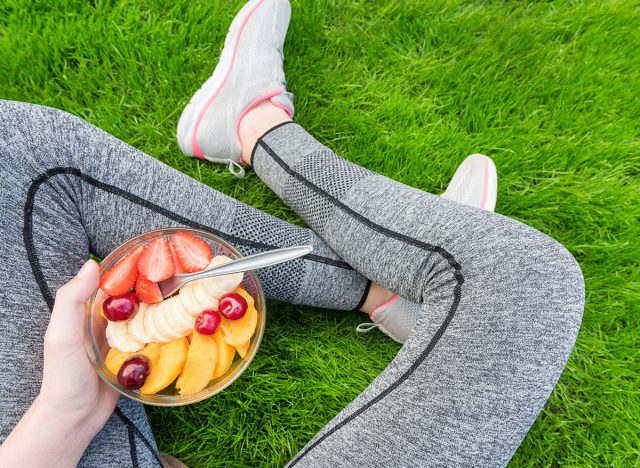
Mindful eating? Wait a minute! Aren't we going to talk about "cutting this out and cutting that out? Stop doing this, stop doing that? I want to get rolling with this!"
We're rolling. Don't worry, we're on our way. But before we start removing and adding things, we've GOT to talk about how you eat before discussing what you eat.
Commit to mindful eating practices like chewing food slowly and eating without distractions. No smartphone at lunch or dinner. No TV while you're eating. Try having a conversation. Not sure how long you usually take to eat? Then set a timer and add a minute every day. Chew your food more, and don't rush.
Focus on the process of eating. This reduces stress eating, emotional eating, and enhances intuitive eating.
This is very specific and we put a time frame on it to get it down pat. Let's start with a week. After a week, rinse and repeat. Mindful eating is low-hanging fruit that involves practicing a simple skill that anyone can master. Eating more slowly can help with better digestion. And with better digestion comes increased satiety and better nutrient processing, meaning less hunger between meals, and that's going to mean weight loss. This ONE practice nails down issues in other areas without even thinking about them. (Source, Source, Source)
Related: Fitness Expert Gabby Dawn Allen's Secrets to a Perfect Body
Increase Vegetable Intake
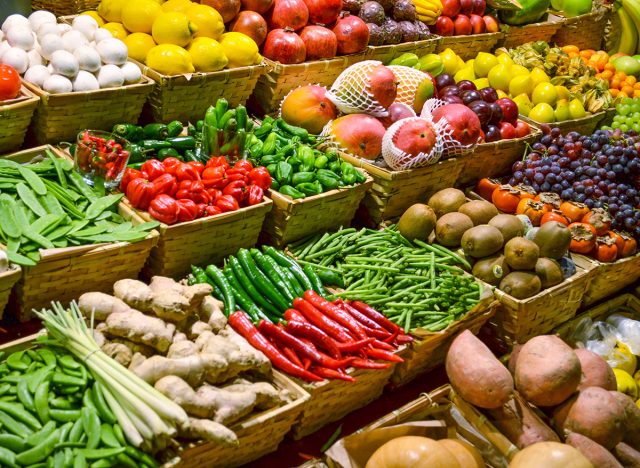
Now we start getting into the "what" of your daily diet. Try to gradually increase your vegetable intake to around 5 servings per day (about 2 servings per meal). This practice will increase your fiber intake, important not only for gut health but also to decrease post-meal hunger signals.
Vegetables are bulk. Vegetables are nutrient dense but light on calories. That's the winning combo compared to fast foods (french fries for example) that are nutrient-poor but calorie-dense. Increasing your vegetable intake supports fat loss, largely due to the accompanying decrease in overall calories. Losing body fat will increase muscle definition, and that's exactly what we're aiming for, along with the superb health benefits (lowered fatty liver, lowered visceral fat). Again, this is "specific" and to make it "measurable", use a food journal or tracking app to keep track of your intake. Start with a week (time-bound) and then do a 30-day challenge to address the "achievable" aspect of SMART. (Source)
Set Hydration Goals

I'm not going to just call this "hydration." Nope. You should set a hydration GOAL to make this measurable. Set your measurable goal conservatively and track it. So let's say you've taken the time to assess how much water you're actually drinking each day and realize that you may only be drinking 2 glasses of water per day and 3 or 4 cups of coffee.
Coffee, by the way, counts as hydration but we don't want to use coffee as our main hydrator or we'll caffeinate ourselves into orbit. Water is King.
Now that you know your baseline, how on earth can we increase that? I hear you saying "but Mark, I already drink as much as I need to!" The amount of water you drink may not be close to an ideal target if you're serious about shedding body fat. Remember: More water improves metabolism, supports muscle recovery from workouts, and reduces hunger. All upside.
So try this: drink a full glass of water when you wake up in the morning. Then during the remainder of the day, you'll drink a full glass of water before every meal, and before every snack. You're a 3-meal, 2-snack per-day person? Well, you've just nailed 5 glasses of water. Waking up and eating are the "landmarks" that you can use to instill this new habit – no need to set a reminder.
And don't forget to track your water intake. It's already specific. Now keep it measurable and achievable.
Believe me, drinking that glass of water prior to meals is a real game changer. It's going to reduce the amount of food you consume and help shed those extra pounds. This is a total win. (Source, Source)
Increase Protein Intake

The vast majority of people who struggle with their weight (and even many of those who don't) underconsume protein. This is a verifiable fact, despite the clickbait you might have seen on social media.
Protein satiates. Protein is essential for building muscle and maintaining cellular health. Protein requires more energy to digest, meaning you'll get a slight post-meal metabolic boost. Have you ever had "the meat sweats?" After eating a steak, or some Thanksgiving turkey, you feel hot afterward. That's the meat sweats. Your body is going into metabolic overdrive.
So make this measurable, since it's already pretty specific. Set a specific goal for daily protein intake. Depending on your body weight and activity level, around 1.6 grams per kg of body weight per day is a reasonable starting point (about 0.8 grams per pound of body weight). That's your minimum. As the weeks pass, you'll likely start to increase it. Track it!
Then aim to consume more of your daily protein intake at breakfast if possible. This will enhance muscle growth and reduce hunger later in the day. And since we're building a Dream Body, and for adults who exercise, studies show that sufficient protein intake preserves lean mass when in a calorie deficit. And don't forget to track your intake! (Source, Source, Source, Source)
Balance Macronutrients
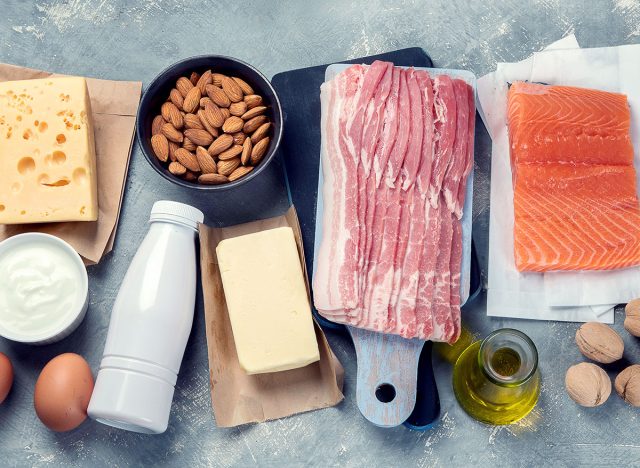
We've hit the low-friction actions and now we're getting into higher-friction actions that require more effort and thought. We need to design your daily meals to hit specific macronutrient ratios depending on your physique goals and dietary preferences. So for example, if you follow a "balanced paleo-style" plan, your macronutrient ratios will be 30% protein, 35% carbs, and 35% fats. If you decide you want to go "low carb", your macronutrient ratios would start at 30% protein, 20% carbs, and 50% fats.
An appropriate and measured proportion of each macronutrient, based on your goals is critical to good health, weight loss, muscle growth, and generating energy for your workouts.
I always advise clients to go the low-friction route at first, and that's the "balanced" route. Attempting a low-carb macro ratio at the start can be too extreme for many people. If you want to try a low-carb protocol, it's best to do it gradually.
And as I mentioned, increasing protein intake is critical to preserving muscle while in a calorie deficit. This can't be emphasized enough.
You're keeping it specific, achievable, and relevant.
Use a nutrition tracking app and/or photos to monitor your daily macronutrient distribution to stay consistent and accountable. (Source, Source)
Related: I Stopped Doing These 3 Things and Lost 40 Pounds
Reduce Added Sugars
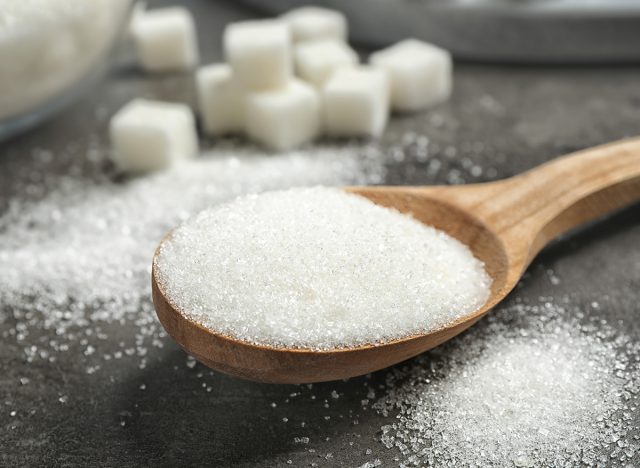
Added sugars are a real issue, so we need to be SMART about it. Aim to limit added sugar consumption to less than 25 grams per day (about 6 teaspoons). Now, 6 teaspoons seems like an awful lot of sugar so you might be thinking "there's no way I add 6 teaspoons of sugar to my coffee or food each day." That's right, you probably don't. But most packaged food contains added sugar, so be aware of labels and look for red flags like "agave sugar," "coconut sugar," "pure cane sugar," and others. Those are all still SUGAR. You can measure these by looking at food labeling and using tracking apps. The long and short is that there are a lot of different ways to address the added sugar in your daily intake.
Studies show that up to 20% of daily calories consumed by Americans are in the form of sweetened beverages and alcohol, and this is one of the primary drivers of weight gain. So that means if you're a soda drinker, the first thing you do to address this isn't to go cold turkey on soda. Try reducing intake and at the same time replacing that sugary beverage with a sugar-free alternative.
No, artificial sweeteners DO NOT stimulate our bodies to spike insulin. This has been soundly disproven. Human randomized control studies definitively show that study participants who drank diet soda over a controlled period lost more weight than those drinking plain water.
Coffee? Same thing. If you take sugar in your coffee, replace it with stevia or even xylitol. Or level it up to "Reacher No-Nonsense Coffee" and take it black.
You'll be amazed at the huge impact that reducing added sugar has on your body composition and calorie intake. Pure gold. Very achievable. (Source, Source, Source, Source, Source, Source)
Limit Alcohol Consumption
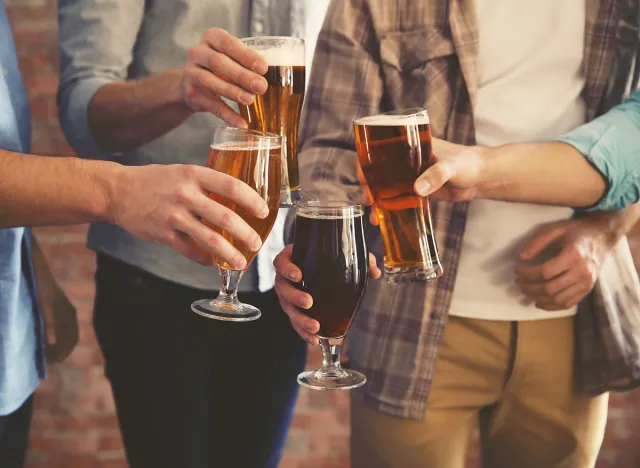
Alcohol can have a big effect on efforts to change body composition. Two or three beers or glasses of wine every evening can derail the most carefully planned body-transformation plan, so set a goal to limit alcohol intake to a specific number of drinks per week (e.g., no more than 3-4 drinks). Alcohol contains empty calories, and it negatively impacts muscle gain, muscle recovery, sleep, and hormones, besides being pretty deleterious to your brain health. Even moderate drinking has a significant negative effect on the brain.
Overconsumption is going to prevent you from achieving that body transformation. Moderation!
No serious plan to create a Dream Body can include consuming 2 or 3 beers daily. Set some guardrails that are achievable. Keep it real, keep it relevant. (Source, Source, Source, Source)
Practice Smart Snacking
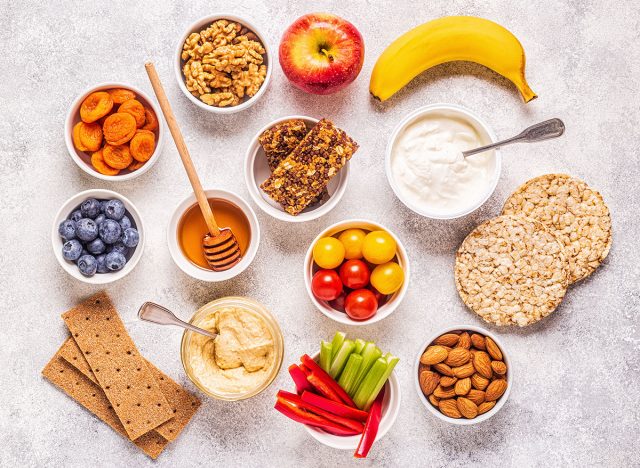
Notice I didn't say, "Don't snack." Remember when you were a kid and Mom told you "not" to do something? Of course, after she told you that, you HAD to do it or try it. It's human nature. So we're going to address this a little differently.
If you find yourself reaching for a bag of Doritos, it's time to make sure they're out of sight from now on. Even better, stay out of the snack aisle at the supermarket and don't even bring snack food home with you. All processed snack food is created in labs by teams of researchers whose goal is to make the food as hyper-palatable as possible. That means it's engineered to get you to eat more of it. Yikes.
Research has shown that the quality of snacks and not snacking per se has a direct effect on BMI and reflects the overall quality of an individual's diet. Replace these unhealthy snacks with healthier options (e.g., nuts, fruits, or plain yogurt) aiming for a specific number of healthy snacks per day, and monitor your snack choices and quantities with a food journal. Specific, measurable, relevant! (Source)
Related: I'm a Dietitian and These Are 7 Foods You Should Never Eat
Maintain a Calorie Deficit for Fat Loss
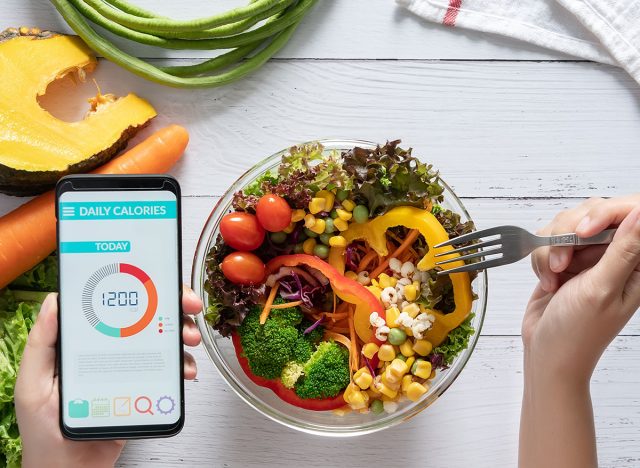
You might be thinking "of course, this is a no-brainer!" It may seem that way, but without tracking and measuring, a significant proportion of people underestimate their caloric intake and overestimate their activity level. This is a common issue.
After hitting the first 8 in our list, calculating and maintaining a calorie deficit is relatively simple. Why? Because we've dealt with all of the foundational issues that will naturally drive us toward a calorie deficit. If step 9 is done at the outset, be prepared for a very tough ride. Fortunately, we've already dealt with basic issues like being mindful, eating more vegetables and protein, and drinking more water. We've already taken actions that reduce hunger. Now we're ready to do some number crunching, and it'll be easier than you imagined.
Calculate a daily calorie goal that creates a sustainable deficit (Specific: 200-400 calories less than your daily maintenance level) for fat loss. Of course, you need to calculate your maintenance calories, and there are a number of online tools to do so.
Don't go overboard at the outset in a mad rush to lose weight faster. Slow and steady is the way. Use a tracking app to monitor your intake, measure body fat percentage every 4 weeks, and adjust as needed.
SMART all the way! (Source)
Maintain a Regular Eating Schedule

Consistency is key to sculpting and transforming your body. That said, aim to eat at consistent times throughout the day to stabilize energy levels, minimize hunger, and support metabolism. It doesn't matter whether you eat twice a day or three times a day, or perhaps do Intermittent Fasting. The important thing is to maintain a consistent schedule.
Sit down with your planner on Sunday and map out your meal schedule for the week, including scheduling pre or post-gym meals at appropriate times, to ensure adherence. Nothing is left to chance. (Source)
Understand the Sleep and Nutrition Connection

Sleep is one of the hidden influences on weight loss. Poor sleep has downstream negative effects on hormones that regulate hunger, so it makes sense to improve sleep quality. Inadequate sleep decreases self-control and increases hunger, so you have to improve your sleep.
Avoid caffeine and heavy meals close to bedtime and minimize screen time, aiming for 7-9 hours of sleep per night. Better sleep not only supports hormone balance and muscle recovery but also reduces hunger the following day. Better quality sleep is one of those often neglected influences but it is definitely achievable, relevant, and hugely impactful to building your Dream Body. (Source)
Fuel Your Strength Training
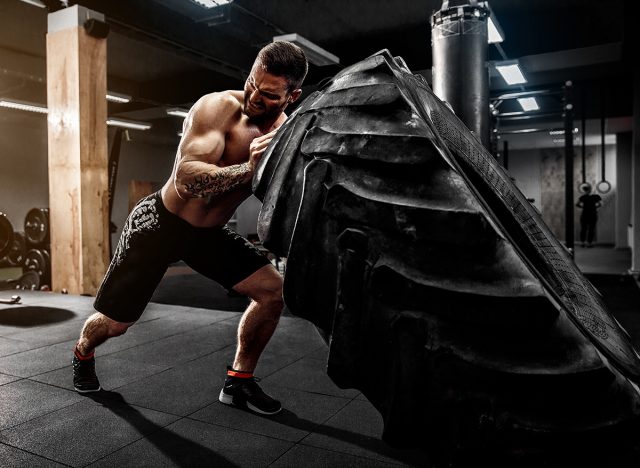
There is a lot of controversy and disagreement over pre and post-workout meal timing, but most coaches will concede that having a meal or protein smoothie within two or three hours after your workout has no downside but likely lots of upside. Plan to consume a specific ratio of carbs and protein (e.g., 3:1) within 30 minutes after strength training or HIIT sessions if possible to optimize recovery and muscle growth and keep that intake measurable by logging your post-workout nutrition to ensure consistency.
A word of caution: don't use working out as an excuse to over-consume. Your workout may burn 400 calories but that's easily negated by stopping for a pizza or a burger and fries. Keep your post-workout fuel protein-dense and calorie-light. Abs are built in the kitchen! (Source, Source)
Related: I'm a Fitness Trainer and These Are the Simple Habits Responsible for My Six-Pack
Consume More Omega-3 Fatty Acids
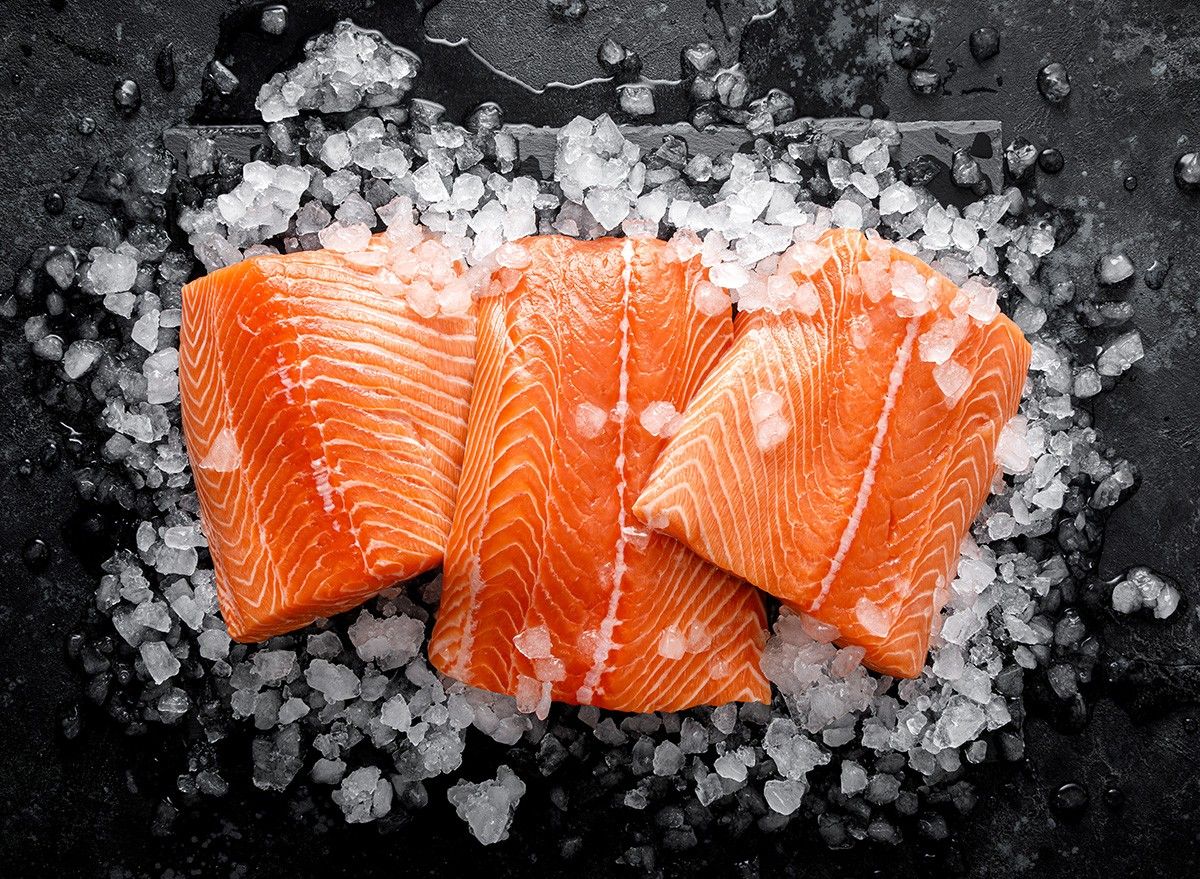
The Western diet is deficient in Omega-3s. That's a simple fact. That means you should commit to including omega-3-rich foods (like salmon, flaxseeds, or walnuts) in your diet 2-3 times a week to support cognitive health, muscle recovery, reduce inflammation, and support heart health. If you don't eat much fish, consuming a high-quality fish oil supplement is good insurance.
Avoid cheap fish oil supplements. Don't just buy the cheapest brand. Buying a quality brand ensures that it will have lower oxidation levels. Third-party tested fish oil is the Gold Standard and if possible, look for fish oil supplements with a low TOTOX score (Total Oxidation), ideally less than 10. (Source, Source, Source, Source, Source)
Do Weekly Meal Prep
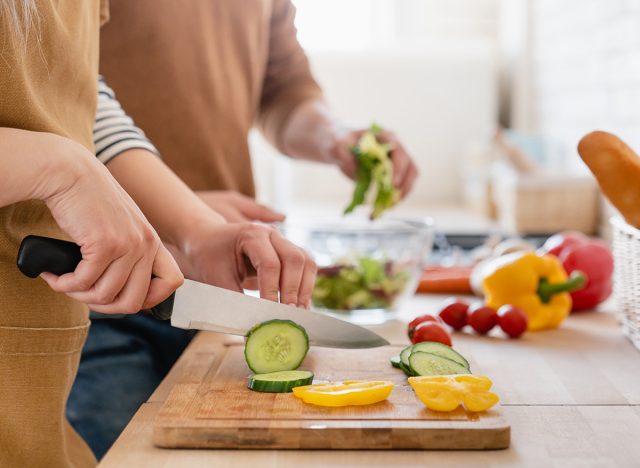
I've left this one second to last for a very good reason: doing weekly meal prep is a big step and without a foundation of at least some of the previous 13 actions, prepping won't serve a clear purpose. Advance prepping meals is the culmination of everything else. At this point, you've been nailing down the practice of eating more vegetables, getting more protein, balancing your meals according to macros, nutrients, and calories, and now you're ready to put it all together by prepping meals for the coming week in advance.
Dedicate specific hours each week to meal prep, preferably on the weekend if possible, ensuring that you have healthy, portion-controlled meals ready. Get a good set of containers (the best are glass, but plastic will do), write down meals for the week in a meal planner, and go to the supermarket with purpose. Then you're ready to prepare the meals, freeze the ones that won't be consumed within 2 or 3 days, and refrigerate the rest.
Meal prep encompasses every aspect of SMART Nutrition that we've covered: Specific, definitely Measurable, Achievable, Relevant, and Time-Bound.
Make Adjustments Based on Progress

Last, none of this will be sustainable and meaningful if you don't monitor progress and make necessary adjustments. Calories and macro portions aren't written in stone. As you see your weight drop and your body fat decrease, eventually you'll likely reach a sticking point, and that's the time to re-evaluate your program and make adjustments to maintain progress.
Set regular check-ins (e.g., every 2 weeks) that include measuring weight, body fat, and girth measurements (basic ones: waist, chest, thighs) to assess your progress towards your physique goals and adjust your nutrition plan accordingly. This ensures your approach remains relevant to your goal as your body changes. Keep in mind that it's not just your physical appearance that's changing. Your hormone levels, metabolic rate, lean muscle mass, and more are in a state of change, so learn to be flexible as your journey progresses.
Related: 5 Habits from Fitness Trainer Krissy Cela that Could Change Your Life
Final Word From the Expert
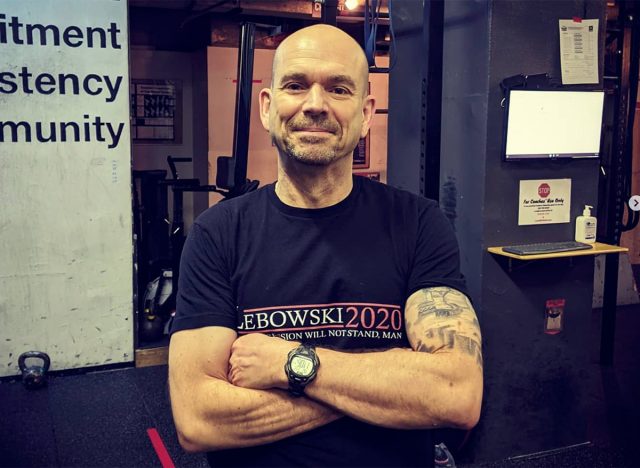
By applying the SMART framework to these 15 nutrition strategies, you can gradually create a structured and effective plan for achieving that Dream Body. Every one of these strategies might seem to be utterly simple, but as both Steve Jobs and Leonardo DaVinci said so well, "Simplicity is the ultimate sophistication." SMART Nutrition is our dog.
💪🔥Body Booster: Set aside time each week for meal prep, ideally on weekends. Plan your meals, shop purposefully, prepare your meals, and store them properly for the week ahead.




